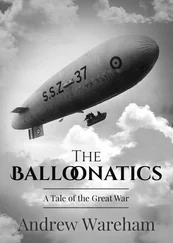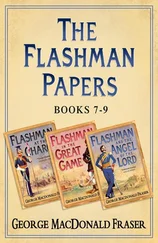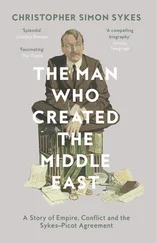When we saw them spread across 6 kilometres of gentle swell – three tankers in V-shaped formation, the four warships at equidistant points around them – they looked set for a naval regatta rather than a hazardous voyage up the Gulf. The foreign tankers lying across the ocean around them, some with steam up, others riding the tides for their masters’ orders, were somehow familiar, faint echoes of those great convoys that set off through the Western Approaches forty-six years earlier. Three new American-registered ships – Gas King, Sea Isle City and Ocean City – were unremarkable symbols of Washington’s political determination in the Gulf; ill-painted, a touch of rust on their hulls, the American flag not yet tied to their stern. The US warships Kidd, Fox and Valley Forge lay line astern and abeam of them, a further American vessel standing picket. There was an element of theatre about it all, this neat little configuration of high-riding empty tankers and their grey escorts, lying in the hot sea, actors awaiting the curtain to rise upon their own farce or tragedy.
There was a small but sudden bright, golden light on the deck of the Valley Forge and an illumination rocket moved gracefully up over the sea then drifted untidily back towards the waves. ‘This is US warship,’ the voice came back into our headsets, louder and more clipped. ‘You are inside two nautical miles. Request you clear. Over.’ Coming up at us from the Valley Forge now was a big anti-submarine helicopter, an SH 603 whose remarkable ascent was assisted by two oversize engines. It came alongside, its crew staring at us from behind their shades, a lone hand in the cavernous interior gesturing slowly in a direction away from the ships. Around nine in the morning, a sleeker warship with a long, flat funnel and Exocet missile launchers on her decks sailed slowly across the rear of the American convoy, a British frigate of the Armilla patrol, HMS Active keeping the sort of discreet distance from America’s latest political gamble that British prime minister Margaret Thatcher would have approved of, at least one nautical mile from the nearest American ship.
Iran’s anger was growing. *Its Revolutionary Guards began assaulting unescorted merchant ships with rocket-propelled grenades, approaching them on power boats from small Iranian islands in the Gulf and then opening fire at close range. All this time, the margins of error grew wider. In mid-August, an American fighter aircraft over the Gulf fired two rockets at an Iranian ‘plane’ that turned out to be nothing more threatening than a heat ‘band’ in the atmosphere. Two weeks later, the Kuwaitis fired a ground-to-air missile at a low-flying cloud because humidity had transformed the vapour into the image of an approaching jet aircraft on their radar screens.
Crowds ransacked the Saudi embassy in Tehran but the ‘spontaneous’ demonstration in protest at the Mecca deaths included some very professional locksmiths who stole $40,000 in cash from the embassy vault. In an effort to damage Iran’s economy, the Saudis threatened oil price cuts, although this was a self-defeating weapon. Iraq, like Iran, relied upon its oil exports to help fund its war and, with scarcely any foreign currency reserves, Baghdad now owed $60 billion in foreign debts. Kuwait, one of Iraq’s principal financial supporters, would see the $17 million in profits which it had obtained from its additional oil exports since the US re-flagging of its tankers disappear overnight. The Arabs therefore remained as vulnerable financially as they often believed themselves to be militarily.
And now more mines were discovered in the Gulf. One exploded against the supertanker Texaco Caribbean off Fujairah in the Gulf of Oman, far outside the Arabian Gulf. The explosion ripped a hole in her number three tank large enough to drive through in a family car. There was more condemnation of Iran, but very little mention of the fact that the ship was carrying not Kuwaiti exports but Iranian crude oil from the offshore terminal at Larak. Like the Iraqi missile attack on the Stark – the assault that brought Washington to a frenzy of anger against Iran – now the Iranians were supposedly mining their own supertankers, again displaying that cold contempt for world peace of which they had always been accused. Sure enough, within two days, a British Foreign Office minister was talking of Tehran’s ‘very irrational regime’.
Two more mines were found by, of all people, an NBC crew. Steve O’Neil, flying low over the sea in our usual chopper, was looking through his view-finder when he glimpsed a large, spherical black shape disappearing past the helicopter’s left skid. He was only a few metres from the water, flying at more than 150 kilometres an hour, but the object was too sinister – too familiar from a dozen war movies – to be anything other than a mine. A few hours later and in almost identical circumstances, a CBS crew found another mine, black-painted like the first but weighted down by a chain. Chinese military technicians working with the Iranians reported that Iran had built a factory near the port of Bandar Abbas to upgrade the old mines they were buying, mines that were originally manufactured – a short pause for imperial reflection here – in Tsarist Russia.
In April, the American warship USS Samuel Bo Roberts was almost sunk when it struck a mine while on Gulf patrol. On 21 September, Rear Admiral Bernsen, the same officer who had meekly agreed that his ships were better off using supertankers for their own protection, decided that sonar-equipped ‘Seabat’ helicopters aboard the USS Jarrett – by historic chance, a sister ship of the Stark – should attack the Iranian naval vessel Iran Ajr after it was observed for thirty minutes laying mines in the Gulf 80 kilometres north-east of Bahrain. Reporters later taken aboard the 180-foot Iranian vessel – an unromantic nine-year-old Japanese roll-on-roll-off landing craft – saw ten large black-painted mines bearing the serial number ‘M08’ near the stern of the boat with a special slide attached to the deck so that the crew could launch them into the sea. Bullet holes riddled the deck, cabins and bridge structure, with trails of blood running along the galleyways. Three of the thirty-man Iranian crew were killed in the attack, two more were missing believed dead and another four wounded, two seriously. Rafsanjani said that the American claim of minelaying was ‘a lie’, but it clearly was not, and the Iranians finally retracted their assertion that the Iran Ajr was an innocent cargo vessel. Saddam Hussein now had the satisfaction of knowing that the United States had aligned itself with Iraq as an anti-Iranian belligerent.
The United States followed up on its success against the Iranian minelayer just over three weeks later with a naval strike against two Iranian oil platforms 130 kilometres east of Qatar. Four US guided missile destroyers firing 5-inch guns demolished the Rustum and Rakhsh platforms. Defence Secretary Caspar Weinberger called it a ‘measured response’ to an Iranian missile attack on an American-flagged tanker the previous week. All that initially came from the Iranians was a distant Iranian voice pleading over a crackling radio for a naval ceasefire so that wounded men could be evacuated from one of the burning rigs. The two platforms had been used as military bases by Revolutionary Guards, the Americans claimed. Tehran warned, not very credibly, that the United States would receive a crushing response from Iran.
Because these military actions involved the Western powers, little attention was paid to the far more serious casualties still being inflicted in the land war, even when the victims were clearly civilians. On 12 October, for instance, an Iranian ground-to-ground missile allegedly aimed at the Iraqi defence ministry in Baghdad struck the Martyrs Place Primary School, 20 kilometres from the ministry, as children were gathering for morning class. The explosion killed 29 children and wounded 228 other civilians, a hundred of them critically. Iraq had just recommenced the use of chemical weapons against Iranian forces outside Basra, but this did not prevent the Iraqis capitalising on what they immediately condemned as an example of Iranian ‘bestiality’.
Читать дальше












